How much do Google Ads cost? And more specifically, what are they going to cost me?
It's a common question, but even with the plethora of industry projections available online, Google Ads pricing still be difficult to determine. There's so much more to consider than the keywords' cost per click (CPC), which is what people tend to focus on. Instead of solely focusing on the CPC, consider how much each new lead and customer will cost, so you can measure that metric against the amount you spend on your Google Ads campaign.
If you do the proper research and Google Ads forecasting, you should be able to accurately predict your ad spend and how strong your ROI will be right from the first month of using Google Ads.
In this post, we outline 6 easy steps to follow to help you quickly answer your Google Ads pricing questions, and determine your ROI.
1. Set Campaign Goals
First things first, you need to set your campaign goals. This involves identifying your objectives (what you want to get out of your ads), defining the metrics that you're going to use to determine whether the ad campaign is successful, and what your budget is or should be.
Identify Your Objectives
The first step is to decide what you want to achieve, as this well help determine pricing for Google ads. Are you aiming to increase brand awareness, generate more leads, or drive sales conversions? Your customer objectives will shape every aspect of your campaign, from keyword selection to ad copy and targeting.
Define Key Performance Indicators (KPIs)
Once you've set your objectives, it's time to determine how you'll measure success. KPIs are metrics that help you evaluate your campaign's effectiveness. For instance, if your goal is lead generation, you might track click-through rate (CTR) and cost per acquisition (CPA). If it's sales-focused, return on ad spend (ROAS) could be a critical measure.
Align Your Budget With Your Goals
Your budget should reflect the scale and ambition of your objectives. Estimate how much you're willing to invest based on the outcomes you expect. For example, a campaign focused on brand awareness might have a broader reach but a lower cost per click, while a conversion-driven campaign may require a higher budget to target high-intent audiences effectively.
2. Understand Cost Factors
Running a successful Google Ads campaign isn't just about great targeting and ad copy—it's also about managing costs effectively. Understanding the factors that influence your ad spend can help you make smarter budget decisions and maximize your return on investment.
Keyword Bidding
- Your bid amount directly impacts cost-per-click (CPC), which is a main factor in Google ads pricing.
- High-competition keywords often require higher bids to secure top placements.
- Balance competitiveness with budget efficiency to keep costs under control.
Ad Rank and Quality Score
- Google uses factors like ad relevance, expected CTR, and landing page experience to calculate your Quality Score.
- A higher Quality Score leads to lower CPCs and better ad placements.
- Invest in creating relevant, high-quality ads and optimized landing pages to improve your score.
Ad Formats
The type of ad you choose—whether it's search, display, shopping, or video—can influence costs. For instance, shopping ads often have higher CPCs due to their visual appeal and conversion potential, while display ads might cost less but are better suited for brand awareness campaigns.
|
Ad Type |
Description |
|
Search Ads |
Typically have competitive CPCs due to high user intent. |
|
Display Ads |
Often cost less but are better suited for brand awareness. |
|
Shopping Ads |
Have higher CPCs due to their visual appeal and strong conversion potential. |
|
Video Ads |
Costs vary depending on format (e.g., skippable vs. non-skippable). |
Geographic Targeting
- Location-based targeting affects budget based on competition:
- High-demand areas: Higher costs due to increased competition.
- Less competitive regions: Lower costs but still effective for reaching relevant audiences.
Audience Targeting
- Costs increase as targeting becomes more specific:
- Demographics (e.g., age, gender).
- Interests (e.g., fitness enthusiasts, tech lovers).
- Behaviors (e.g., frequent online shoppers).
- While more precise targeting can raise costs, it often improves conversion rates, making the investment worthwhile.
3. Use Google Ads Keyword Planner

Head over to the Google Keyword Planner and plug in the keywords you think prospects use to search for your products or services. Make sure to adjust the “Targeting” setting to only show information for the locations and languages that are relevant to you. You should see a ton of additional suggestions, as well as some other key data:
|
Google Ads Keyword Planner Setting |
Description |
Tips for Effective Use |
|
Monthly Search Volume |
Displays the amount of traffic available for a specific keyword, indicating the potential audience size. Larger numbers typically mean greater opportunity for high-quality traffic. |
Check the search volume for all services or top products to estimate ad reach and spending potential effectively. |
|
Average Cost-Per-Click (CPC) |
Provides an estimate of how much each click will cost based on keyword competition. High competition can drive up costs, so balancing CPC with budget is important. |
Look for keywords with good search volume and a manageable CPC to optimize your ad spend without overspending. |
|
Competition Level |
Indicates how competitive a keyword is (low, medium, or high), helping you assess whether it fits your campaign's strategy and budget. |
Target a mix of low and medium competition keywords to balance cost and visibility, especially in the early stages. |
|
Top-of-Page Bid Estimates |
Suggests the bid range needed to appear at the top of search results. Provides both low-range and high-range estimates for better budgeting. |
Use this data to set realistic bids for high-value keywords while staying within your budget. |
|
Keyword Trends |
Shows historical data on keyword search trends over time, helping identify seasonal opportunities or shifts in audience interest. |
Focus on keywords with consistent or rising trends to maximize campaign impact. |
|
Negative Keywords |
Allows you to identify and exclude irrelevant keywords that might trigger your ads unnecessarily. |
Regularly update your negative keyword list to improve targeting and avoid wasting budget on unrelated clicks. |
Understand Competition
When it comes to running a successful Google Ads campaign, competition is a big deal. Each keyword is rated as low, medium, or high competition, which tells you how many advertisers are vying for the same audience. Naturally, high-competition keywords come with higher CPC, but they can also bring higher rewards because they often have more search intent behind them.
To make the most of your budget, dive into the Google Ads Keyword Planner to analyze the competition for your keywords. If you're just starting out or working with a smaller budget, focus on a mix of low and medium-competition keywords. These are typically easier to win and can still drive solid traffic to your site without breaking the bank. Over time, as you see results, you can gradually start competing for those higher-competition keywords.
Adjust Bids
Your bidding strategy is where the real balancing act happens. For the keywords that matter most—those with high search volume and great potential for conversions—you'll want to set a maximum CPC bid that reflects their value to your campaign. But here's the catch: you've got to stay within your budget. Overspending on just a few clicks can drain your funds quickly.
Tools like top-of-page bid estimates in Google Ads can give you a good idea of how much you should bid. Once your campaign is up and running, keep an eye on performance. If a keyword is delivering great results, it might be worth increasing your bid slightly to boost visibility. On the flip side, if a keyword isn't performing, don't be afraid to lower your bid or reallocate that budget elsewhere. The key is to keep tweaking and optimizing to get the best bang for your buck!
Historical Metrics

Predicting the future often means looking to the past to find patterns and trends to draw from. Hopefully you've been tracking your website data (but if you haven't, reach out to us for help getting it set up!) We recommend waiting until you have the right tracking data in place for your Google Ads forecasting before getting started, as it will make all the difference with determining your Google Ads pricing.
Metrics you'll want to pull include:
- Website Goal Conversion Rate: These should be trackable actions aligned with your leads or sales. Try to stay away from soft goals like newsletter sign-ups, or social follows here. While those actions are great and important to track, we'll want to focus on data like lead contact forms, phone calls, online orders, and so on. The better job we do here, the more accurate your forecasting will be. Your web analytics is the best place to look for this.
- Lead-to-Sale Rate: How many leads does it take for you to acquire a new customer or close a sale? Try to be as accurate as possible here, and don't count poor-quality leads since we know that Google Ads delivers high-quality, bottom-of-funnel leads. Your CRM is the best place to look for this.
- Customer Lifetime Value (CLV): What is the overall value of a customer over the course of their lifetime? Your accounting platform (or accountant) is the best place to look for this.
4. Set a Daily Budget
Now that you have some keywords in your list to use in your ads, it's time to set your daily budget. This ensures you stay within your overall campaign budget while optimizing ad performance. Here's how to approach it:
Determine Overall Campaign Budget
Begin by deciding on your maximum monthly spend. This figure should align with your overall marketing goals and account for the potential return on investment (ROI). For example, if you aim to spend $3,000 a month, you'll need to divide this across your campaigns based on their priority and performance.
Try to consider a budget range that you'd be willing to spend on marketing as long as the ROI is positive. Think of a low, mid, and high range that all fit within your comfort zone.
You can call them whatever you want, but here are the 3 tiers we use here at Roketto and the strategy behind them:
- Market Entry: The safest way to get off the ground and minimize the risk of wasting large amounts of spend. While this can seem like a danger-free way to explore if Google Ads will measure up to your expectations, it has some downsides. It can take a longer time to see results, longer to optimize performance, and sometimes even fizzle out long before your campaign reaches its full potential. We recommend this option for smaller businesses that show clear opportunities for quick, easy wins.
- Market Share: Balanced risk vs return is what most people tend to go for, making this option the most common. A strong enough budget will give your campaign a fair go, without being overly aggressive.
- Market Leader: This isn't typically where most advertisers start, but as you achieve success in Google Ads, the focus quickly shifts from the cost to the return and results. Once the confidence is there, you'll likely want to maximize your spend opportunities and campaign potential through vigorous testing and optimization.
Adjust for Seasonality
Seasonal trends play a significant role in ad performance, so it's essential to adjust your daily budget during peak or slow periods. For instance, if you're a retailer experiencing higher demand during the holiday season, increase your daily budget to capture more traffic and conversions. Conversely, scale back during quieter months to avoid overspending.
5. Calculate Cost Per Click
Calculating your cost-per-click (CPC) is a crucial step in building a budget-conscious Google Ads campaign that delivers results. By understanding the dynamics of keyword bidding and continuously monitoring performance, you can strike the right balance between visibility and cost-efficiency. Here's a more detailed breakdown of what to consider:
Analyze Keyword Bidding Trends
Your bid amount directly influences your CPC, but there's more to it than just setting a number. The cost of each click is determined through Google's auction system, which takes into account:
- Keyword Competition: The more advertisers bidding on a keyword, the higher the CPC. Keywords with high intent (e.g., "buy running shoes") often come with a premium price because they're more likely to convert.
- Quality Score: This is a measure of your ad's relevance, click-through rate (CTR), and landing page experience. A higher Quality Score can lower your CPC, allowing you to achieve better placements without increasing bids.
- Market Demand: Seasonal trends and industry-specific demand can fluctuate, affecting the average CPC for certain keywords. For instance, retail-related keywords may see spikes during holiday shopping seasons.
Use tools like Google Ads Keyword Planner to assess these dynamics. Look for keywords that align with your campaign goals while offering a balance of high intent and manageable competition. This will help you forecast costs and plan your budget effectively.
Adjust Bids for Optimal Placement
Your CPC should align with your campaign objectives and desired ad placement. High bids can secure top ad spots, which are more visible and often attract higher click-through rates. However, this strategy comes with a higher cost, so it's essential to prioritize the keywords that matter most to your campaign.
Consider these scenarios when adjusting your bids:
- High-Value Keywords: For keywords with strong conversion potential, slightly increasing your bid can boost visibility and improve your return on investment (ROI).
- Underperforming Keywords: If a keyword has high CPC but doesn't drive meaningful conversions, lower your bid or pause it altogether.
- Budget Reallocation: Shift budget from low-performing keywords to those with proven success to maximize efficiency.
Utilize Google's Top-of-Page Bid Estimates to guide your bidding decisions. This data provides a range of bid amounts needed to secure top ad placements, helping you determine if the investment is worth the potential return.
Monitor Keyword Performance
CPC isn't just about the cost of clicks—it's about ensuring those clicks translate into valuable actions. Regularly reviewing your keyword performance is essential for optimizing your campaign's ROI.
Key actions to take when monitoring keyword performance include:
- Evaluate Conversion Rates: Check if the keywords generating clicks are also leading to desired outcomes, such as purchases, sign-ups, or form submissions.
- Track Cost-Per-Conversion: Determine how much you're spending to achieve each conversion. If this figure exceeds the value of the conversion, adjustments are needed.
- Use Negative Keywords: Eliminate irrelevant or costly keywords that don't align with your campaign's goals. Adding negative keywords helps refine your targeting and reduces wasted ad spend.
- Identify Emerging Trends: Monitor keywords that start gaining traction over time and consider increasing their bids to capitalize on the momentum.
Google Ads dashboards offer detailed insights into your CPC, conversions, and keyword performance. Use these tools to fine-tune your bids and reallocate your budget to high-performing areas of your campaign.
6. Monitor Performance with Google Ads Tools
Continuous monitoring and optimization are the backbone of a successful Google Ads campaign. Google Ads provides a suite of powerful tools that allow you to track performance, identify opportunities for improvement, and refine your strategy to maximize results. Here's how to make the most of these tools:
Use the Google Ads Performance Report
The Google Ads Performance Report is your go-to resource for understanding how well your campaigns are performing. This report provides detailed insights into essential metrics like:
- Cost-Per-Click (CPC): Shows how much you're spending for each click and helps identify whether your bidding strategy is cost-effective.
- Cost-Per-Acquisition (CPA): Tracks the cost of acquiring new leads or customers, which is critical for evaluating campaign profitability.
- Return on Ad Spend (ROAS): Measures the revenue generated for every dollar spent, allowing you to assess overall campaign efficiency.
By regularly reviewing these metrics, you can identify which campaigns, ad groups, or keywords are delivering value and which may need adjustments. Look for trends such as rising CPCs or declining ROAS to take proactive measures before performance declines further.
Optimize Campaigns
Optimization is an ongoing process that ensures your campaigns stay aligned with your goals and adapt to changing market dynamics. Use performance data from the Google Ads dashboard to make informed adjustments. Key areas to focus on include:
- Bids: Refine your bidding strategy by increasing bids for high-performing keywords or reducing them for underperforming ones.
- Targeting: Adjust audience targeting to focus on demographics, locations, or behaviors that drive the best results.
- Ad Copy: Update ad content to reflect trends, promotions, or insights from A/B testing to improve engagement and conversion rates.
For instance, if a specific ad group is consistently underperforming, consider reallocating its budget to a better-performing group or experimenting with different ad formats and placements to improve results.
A/B Test Ad Variations
Testing ad variations is one of the most effective ways to improve campaign performance over time. A/B testing allows you to compare different versions of your ads to see which resonates best with your audience.
Key elements to test include:
- Headlines: Experiment with different messaging styles, such as urgency ("Limited Time Offer") versus informational ("Expert Solutions for Your Needs").
- Images or Videos: Compare visual content to see what grabs more attention and drives higher click-through rates (CTR).
- Call-to-Action (CTA): Test different CTAs, such as "Shop Now" versus "Learn More," to identify which generates more conversions.
- Targeting Settings: Run tests on audience segments to determine which demographics or behaviors result in the most cost-effective outcomes.
Use the insights gained from A/B testing to refine your ads further, focusing your resources on the variations that deliver the best results.
Conclusion

Determining Google Ads pricing and maximizing your budget doesn't have to be overwhelming. By following these six steps—setting clear goals, understanding cost factors, using the Keyword Planner effectively, calculating cost-per-click, and continuously monitoring performance—you can create campaigns that deliver measurable results while staying within budget.
Effective Google Ads management is about more than just controlling costs; it's about aligning your spending with your objectives and ensuring every dollar works hard for your business. With proper planning, careful adjustments, and ongoing optimization, you'll not only predict your ad spend with confidence but also maximize your return on investment.
Remember, success in Google Ads is a journey. It requires attention to detail, data-driven decisions, and the flexibility to adapt as your campaigns evolve.
If you need some help planning and controlling your Google Ads pricing, give us a call and we'll get you on the right track!
Chris Onyett
Chris is one of the managing partners at Roketto. His area of expertise is digital marketing and loves sharing and educating on topics like Google Ads, CPC bidding tactics, Google Analytics, and marketing automation. When Chris isn't in the office, he enjoys playing volleyball, mountain biking, and hiking with his American Eskimo.











2.png)
2.png)









